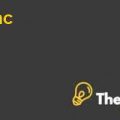
Theories and framework's application:
Theory of Expectancy:
The primary goals set by Dr. Rubash was to increase the profits of the department through increasing productivity. This would only be possible by motivating the physicians and doctors of MGOA. Both the doctors knew that the motivation in doctors will increase the overall productivity. For this, all the doctors are required to be accountable for the profit or loss they gave to the department. On the other hand, expectancy theory states that the motivation in employees is an outcome about the need for reward from them known as “Valence”. Another factor in the theory is “expectancy” that is based on the assessment that the likelihood that the performance by doctors would result in the performance that has been expected from them. The third factor in the theory is “instrumentality” that is based on the assumption that performance by an employee will eventually result in a good reward for them.
Performance and effort relationship:
The doctors at MGOA believed that their efforts would be recognized in the evaluation of their performance. Thus, the doctors who have spent more hours at work expect a high reward and thus their expectancy level was high. On the other hand, some doctors who have spent their most time in the research were worried and believed that the current compensation plan will not work in their favor and thus felt low expectancy.
|
Cause |
Effect |
|
The un-met and non-SMART goals set by MGOA has not been clearly stated by the management. |
The time of the staff had been split between doing clinical work and doing clinical research. The doctors were unable to understand the benefits of each task assign to them. |
|
Implementation of pay for performance compensation system.
|
Although the revenues earned from doing surgeries had been increased by 323 but on the other hand, profit margins decreased to 6.1%. Further, just $13000 of the profits had been earned. |
|
The department has made no changes in the overall process of collection. |
Because of no changes in the collection process, less than 39% of the charges collected. |
Limitations and opportunities for MGOA:
One of the major limitations for the department was the need to conduct along with doing One of the major limitations of the department was the need to conduct along with doing other clinics related work was not defined on a clear basis. Further, the amount of hours spent in a week is very limited. Another limitation of MGOA was the inadequate number of resources that are needed for the collection of bills.
On the other hand, there are certain opportunities present that can be availed by MGOA as well. The department may assign more resources and funds to make the collection of bills more efficient. In addition to this, MGOA can also plan to put into practice a new or advance system for making payment of bills. Furthermore, the department can also set clear expectation and rules for their clinical and research assignments.
Omitted information and assumptions:
Procedures and policies of the company were missing in the case. In addition to this, there was no information about whether the research done by the doctors leads to cut in cost of goods sold or towards the effectiveness of the overall procedure that has been performed. To clarify this, there is a need to make some assumptions. First, if the department allocates more and more funds in the collection of bills, then returns from the collections will improve.
Alternative Analysis:
Alternatives:
Alternative 1:
One alternative could be the department can focus on making changes in the collection of payments through insurance suppliers, rather than covering it from the compensation pay for performance plan.
Alternative 2:
Another alternative could be using pay for performance plan for the collection of bills, but also enlarge the department so that revenue collections can be increased.
Alternative 3:
A third alternative could be removing performance based compensation system entirely and refurbish all the collection procedure. In this way, the department would be able to provide an improved percentage of collection. The procedure and the facility time used by the doctors can be allocated against any cost of MGOA on a proportionate basis. The revenues if remained would then be given back to the providing doctor and thus efficiency and take home pay can then be controlled...............................
This is just a sample partial case solution. Please place the order on the website to order your own originally done case solution.









